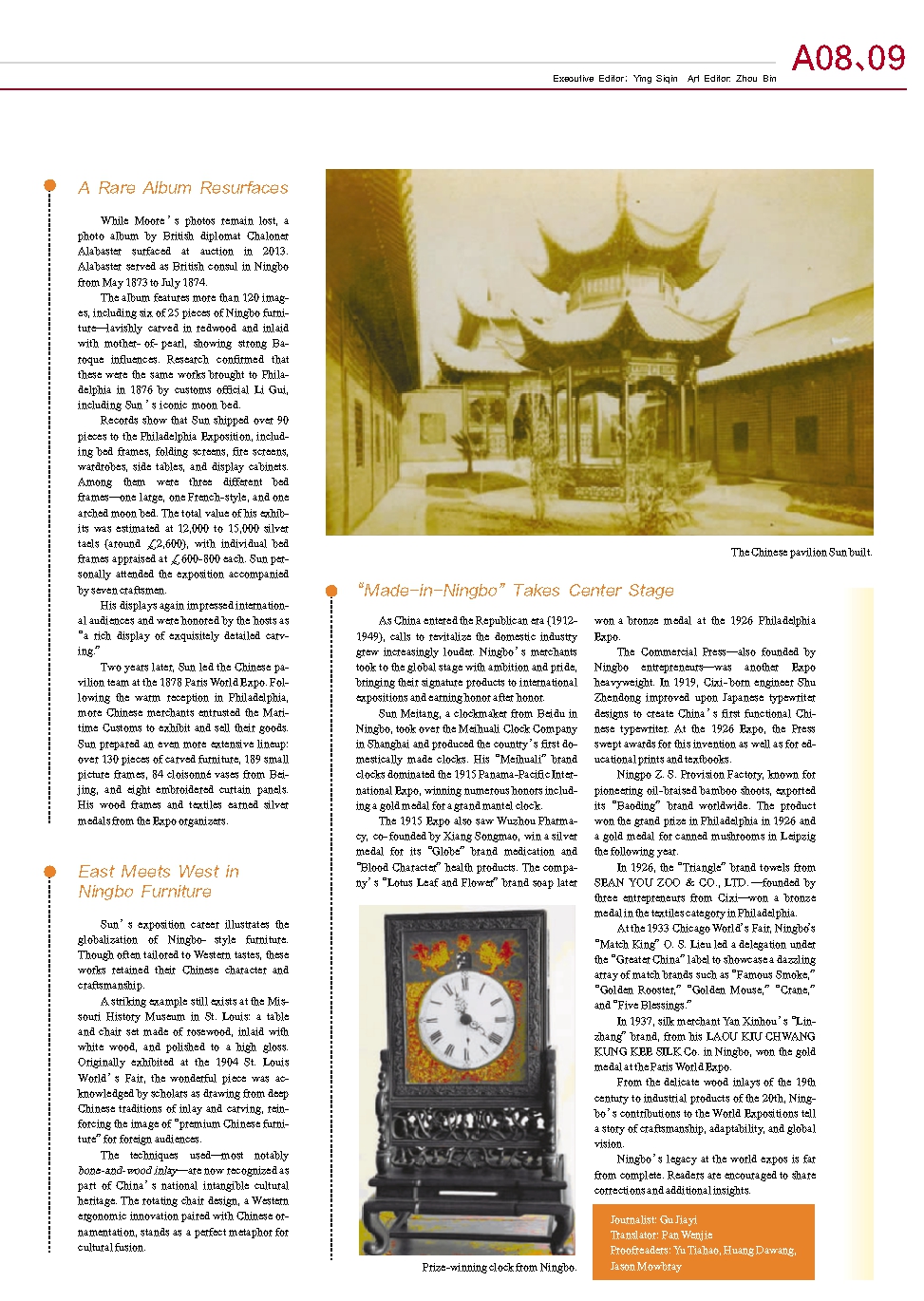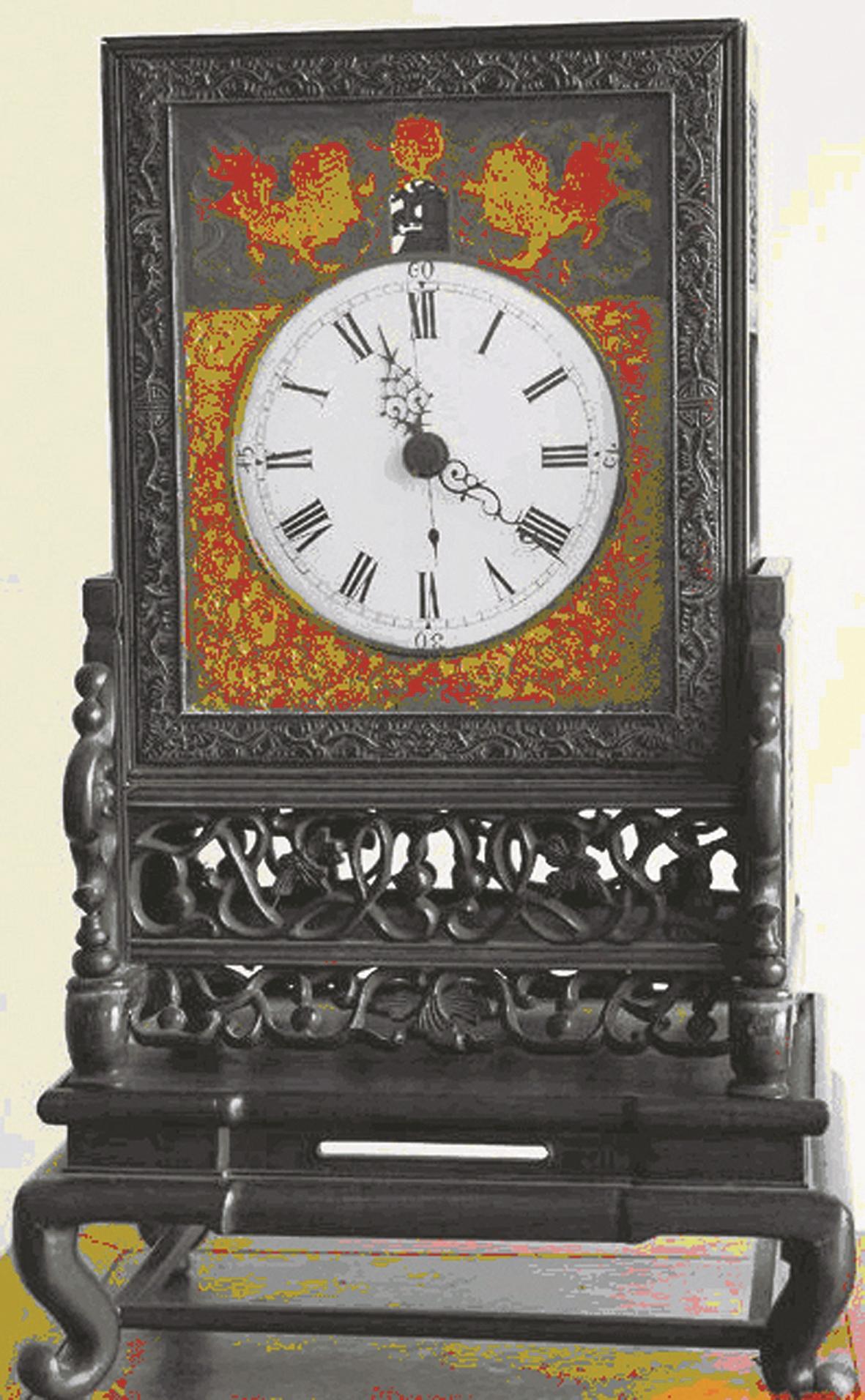A Rare Album Resurfaces
While Moore’s photos remain lost, a photo album by British diplomat Chaloner Alabaster surfaced at auction in 2013. Alabaster served as British consul in Ningbo from May 1873 to July 1874.
The album features more than 120 images, including six of 25 pieces of Ningbo furniture—lavishly carved in redwood and inlaid with mother-of-pearl, showing strong Baroque influences. Research confirmed that these were the same works brought to Philadelphia in 1876 by customs official Li Gui, including Sun’s iconic moon bed.
Records show that Sun shipped over 90 pieces to the Philadelphia Exposition, including bed frames, folding screens, fire screens, wardrobes, side tables, and display cabinets. Among them were three different bed frames—one large, one French-style, and one arched moon bed. The total value of his exhibits was estimated at 12,000 to 15,000 silver taels (around £2,600), with individual bed frames appraised at £600-800 each. Sun personally attended the exposition accompanied by seven craftsmen.
His displays again impressed international audiences and were honored by the hosts as “a rich display of exquisitely detailed carving.”
Two years later, Sun led the Chinese pavilion team at the 1878 Paris World Expo. Following the warm reception in Philadelphia, more Chinese merchants entrusted the Maritime Customs to exhibit and sell their goods. Sun prepared an even more extensive lineup: over 130 pieces of carved furniture, 189 small picture frames, 84 cloisonné vases from Beijing, and eight embroidered curtain panels. His wood frames and textiles earned silver medals from the Expo organizers.
East Meets West in Ningbo Furniture
Sun’s exposition career illustrates the globalization of Ningbo-style furniture. Though often tailored to Western tastes, these works retained their Chinese character and craftsmanship.
A striking example still exists at the Missouri History Museum in St. Louis: a table and chair set made of rosewood, inlaid with white wood, and polished to a high gloss. Originally exhibited at the 1904 St. Louis World’s Fair, the wonderful piece was acknowledged by scholars as drawing from deep Chinese traditions of inlay and carving, reinforcing the image of “premium Chinese furniture” for foreign audiences.
The techniques used—most notably bone-and-wood inlay—are now recognized as part of China’s national intangible cultural heritage. The rotating chair design, a Western ergonomic innovation paired with Chinese ornamentation, stands as a perfect metaphor for cultural fusion.
“Made-in-Ningbo” Takes Center Stage
As China entered the Republican era (1912-1949), calls to revitalize the domestic industry grew increasingly louder. Ningbo’s merchants took to the global stage with ambition and pride, bringing their signature products to international expositions and earning honor after honor.
Sun Meitang, a clockmaker from Beidu in Ningbo, took over the Meihuali Clock Company in Shanghai and produced the country’s first domestically made clocks. His “Meihuali” brand clocks dominated the 1915 Panama-Pacific International Expo, winning numerous honors including a gold medal for a grand mantel clock.
The 1915 Expo also saw Wuzhou Pharmacy, co-founded by Xiang Songmao, win a silver medal for its “Globe” brand medication and “Blood Character” health products. The company’s “Lotus Leaf and Flower” brand soap later won a bronze medal at the 1926 Philadelphia Expo.
The Commercial Press—also founded by Ningbo entrepreneurs—was another Expo heavyweight. In 1919, Cixi-born engineer Shu Zhendong improved upon Japanese typewriter designs to create China’s first functional Chinese typewriter. At the 1926 Expo, the Press swept awards for this invention as well as for educational prints and textbooks.
Ningpo Z. S. Provision Factory, known for pioneering oil-braised bamboo shoots, exported its “Baoding” brand worldwide. The product won the grand prize in Philadelphia in 1926 and a gold medal for canned mushrooms in Leipzig the following year.
In 1926, the “Triangle” brand towels from SEAN YOU ZOO & CO., LTD.—founded by three entrepreneurs from Cixi—won a bronze medal in the textiles category in Philadelphia.
At the 1933 Chicago World’s Fair, Ningbo’s “Match King” O. S. Lieu led a delegation under the “Greater China” label to showcase a dazzling array of match brands such as “Famous Smoke,” “Golden Rooster,” “Golden Mouse,” “Crane,” and “Five Blessings.”
In 1937, silk merchant Yan Xinhou’s “Linzhang” brand, from his LAOU KIU CHWANG KUNG KEE SILK Co. in Ningbo, won the gold medal at the Paris World Expo.
From the delicate wood inlays of the 19th century to industrial products of the 20th, Ningbo’s contributions to the World Expositions tell a story of craftsmanship, adaptability, and global vision.
Ningbo’s legacy at the world expos is far from complete. Readers are encouraged to share corrections and additional insights.
Journalist: Gu Jiayi
Translator: Pan Wenjie
Proofreaders: Yu Tiahao, Huang Dawang,
Jason Mowbray




